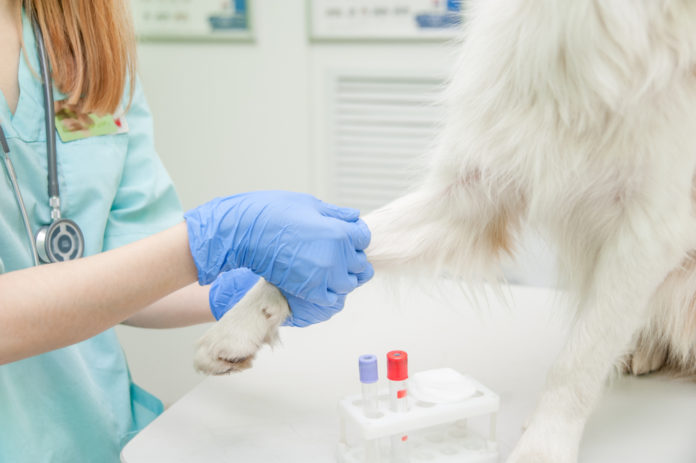An effective cancer screening method for dogs

The best way to beat cancer in dogs is to start treatment as early as possible. The Cancer Risk Assessment (CRA) is a proven and effective way to screen your dog for cancer, so you can catch it sooner rather than later!
Most dogs get some type of cancer in their lifetime. Because of this statistic, developing a way to screen for cancer in canines has become a focus of many researchers. Early detection of cancer leads to early intervention, access to more therapies, and better outcomes. As more options become available to pet parents, it’s important to look for tests that are proven, effective, and well established in science. One simple blood test from VDI Laboratory meets all those criteria: The Cancer Risk Assessment.
What is The Cancer Risk Assessment?
The Cancer Risk Assessment (CRA) is a blood test designed for the early detection of cancer and inflammatory disease in the apparently healthy dog. Intended as a true screening test, the CRA establishes the risk of a major cancer event in the coming four to six months. Opposite of that, the CRA can also give you peace of mind that no occult disease is present in your dog.
Proven
In veterinary medicine it’s unfortunately common to have clinical studies with only 10–20 animals (sometimes less) that are used to create and sell products and services. Often, these animals are also from other studies and just happen to have data that support what the company is selling. The CRA is different.
The Cancer Risk Assessment was created from a very large clinical study comprised of 360 dogs. This robust study was conducted by a reputable university and published in a peer reviewed publication, and was designed specifically to detect cancer early in otherwise healthy dogs. Additionally, the core tests have multiple clinical studies supporting their use in cancer diagnostics in humans, dogs, and cats.
Effective
The Cancer Risk Assessment answers three questions:
1. What is the risk of a cancer event in the next six months? According to the study, the CRA was able to detect 82% of cancers six months prior to clinical signs, and 100% of cancers four months prior.
2. Is my dog in a state that encourages disease? A main component of the CRA is an inflammation assessment. Chronic inflammation can lead to the development of serious disease if left unmanaged. Using the CRA, you will know if there is underlying inflammation present, giving you the option to manage it before it becomes critical.
3. Is my dog healthy overall? If the CRA comes back very low, pet parents can feel confident that there is no hidden disease and no chronic inflammation.
Established
Choosing trusted and well-established tests gives you the most confidence in the results – provided they meet the first two criteria (proven and effective). The CRA comes from a leader in cancer blood diagnostics, VDI Laboratory, which has been providing veterinarians cancer diagnostic services for over 10 years.
The CRA was initially launched in 2013 as INCaSe Health and Cancer Screen, before changing its name and evolving into a more comprehensive offering of wellness panels. Backed by large clinical studies VDI continues to lead the cancer screening and diagnostics charge using blood tests.
Cancer screening and your dog
Getting the CRA done is simple. If you’re interested, discuss the test with your veterinarian and request that they contact VDI Labs or instructions on how to send a sample for testing. It’s a quick blood draw which is sent to the lab in California, USA. Once results are sent back to your vet, you can work with them to develop a plan to maintain your dog’s health, or to resolve and manage any underlying issues.




